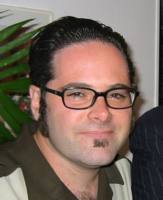Funding Summary
Dr. Reiter’s previous studies suggest that PWS neurons exhibit delayed maturation compared to neurons from typical individuals. Here, his team will use RNA sequencing during neuronal differentiation to better understand the molecular basis of the developmental delay and identify new targets for therapeutic interventions. His team will also evaluate genetic and drug approaches to ‘rescue’ the altered neuronal development in the lab. These studies will lay the foundation for gene therapies and/or pharmaceutical interventions to release the developmental blocks found in PWS neurons.
Dr. Theresa Strong, Director of Research Programs, shares details on this project in this short video clip.
Watch the full webinar describing all 9 research projects funded in this grant cycle here.
Lay Abstract
One of the most difficult things to do in research is to effectively model a syndrome in laboratory. We have taken a unique approach to modeling PWS by using shed (or baby) teeth from children with PWS in order to create neurons in the lab. The advantage is that we can now investigate what goes on in each individuals with PWS in terms of defects in development or gene expression in actual neurons from that person. In this study, we are using a relatively new method called single cell sequencing that allows us to discover differences in expression in individual neurons from the PWS subject, instead of looking collectively at average expression changes across each sample. We found that by doing this, we can detect developmental delay in PWS neurons compared to neurotypical control subjects. If we can find a set of genes related to development that are either not going down or not going up in expression during our 6 week neural development period, we can use these as markers of the neuronal defect in PWS. We can also possibly target these individual genes or pathways that these genes are involved in for therapeutic interventions. Here, we will attempt to rescue these changes in expression using MAGEL2 and SNORD116 constructs, two genes in the PWS deletion region suspected to be involved in the PWS phenotypes. Thanks to the FPWR families, we now have a large collection of PWS dental pulp stem cell lines to make into neurons. We can use these lines to confirm our findings in multiple individuals with PWS, and in the end, determine if these markers can be used to characterize the developmental delay we see in our model. These studies will lay the foundation for either gene therapies using MAGEL2/SNORD116 or pharmaceutical interventions to release the developmental blocks we found in PWS neurons.
Funded Year:
2021
Awarded to:
Larry Reiter, PhD
Amount:
$102,600
Institution:
University of Tennessee Health Sciences Center
Researcher:

Larry Reiter, PhD




